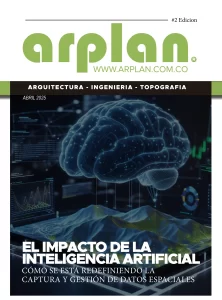Introduction
The revolution of the Building Information Modeling (BIM) has marked a before and after in the architecture and engineering industry. As we progress, BIM has not only altered planning and design but also construction and maintenance methodologies. However, one of the persistent challenges is the precise integration of digital data in representing physical environments. Here, the specification of the Level of Accuracy (LOA) emerges as a fundamental tool. Although it is not directly included in the ISO 19650 standard, its relevance cannot be underestimated as it provides an indispensable framework for Scan to BIM survey projects.
The Crucial Role of LOA in Scan to BIM
Scan to BIM projects are a manifestation of technical precision, converting physical reality data into detailed digital representations. The LOA is essential here, dictating the required accuracy for each captured element of the building. The absence of a standard like the LOA could lead to misinterpretations of data, resulting in costly corrections and a potential deviation from the project’s goal. Therefore, the precision dictated by the LOA must be considered from the beginning of the project, being a determining factor for its success.
Importance of LOA in BEPs
The integration of the LOA into BIM Execution Plans (BEP) is not just a recommended practice but a necessity for the success of any construction project that uses BIM. The BEPs define the standards and processes, and by including the LOA, they ensure that all project participants have a uniform and clear understanding of the accuracy expectations. This clarity is especially critical in the detection and modeling of hidden networks where accuracy can vary significantly depending on the technology used, such as GPR versus 3D laser scanners.

Figure 2: Resolution vs Accuracy. Extracted from USIBD Document C120TM [Guide] – Version 2.0 – 2016 Copyright ©2016 by the U.S. Institute of Building Documentation.
Differentiation and Synergy between LOA and ISO 19650
The relationship between the LOA and the ISO 19650 standard deserves detailed discussion. The absence of the LOA within ISO 19650 is due to structural and focus differences between the two. The ISO standard is dedicated to establishing a global framework for information management throughout the lifecycle of built assets. On the other hand, the LOA focuses on the accuracy of the collected geometric data, essential for the initial phase of any BIM project. This difference does not diminish the importance of the LOA; on the contrary, it highlights the need for a detailed understanding of both to ensure the quality and accuracy of the project.
In-depth Look at the Applicability of LOA
The applicability of the LOA in Scan to BIM survey projects varies widely depending on the complexity and nature of the project. For example, in historic buildings, the level of detail required to capture unique features can be considerably high. In this context, the LOA helps to establish clear parameters for data capture, ensuring that crucial details are not lost and that the resulting BIM model is a faithful representation of the original.

Figure 3: Precision and Accuray.. Extracted from USIBD Document C120TM [Guide] – Version 2.0 – 2016 Copyright ©2016 by the U.S. Institute of Building Documentation.
Final Thoughts
The specification of the LOA in Scan to BIM survey projects is more than a mere recommendation; it is a critical component that ensures precision, efficiency, and success in implementing BIM technologies. The correct integration and application of the LOA ensure that digital models accurately reflect physical reality, which is essential for making informed decisions throughout the project’s lifecycle. Moreover, the inclusion of the LOA in BEPs strengthens communication and understanding among all parties involved, from architects to engineers and constructors, ensuring that all parties have aligned expectations regarding the quality and accuracy of the project.

In this order of ideas, while the LOA is not explicitly contained within the ISO 19650 standard, its application in the realm of Scan to BIM complements and enriches ISO standards by providing specific guidelines on data accuracy. Therefore, it is imperative that industry professionals understand and properly apply the LOA within their work practices to improve the quality, accuracy, and reliability of BIM projects. By doing so, we can move towards more efficient, sustainable construction that meets the emerging needs of contemporary society.
JOSE RODRIGO TORRES MARTINEZ
ARQ. MSC. MAB. PHD (C). PMP
CEO @ArplanColombia



